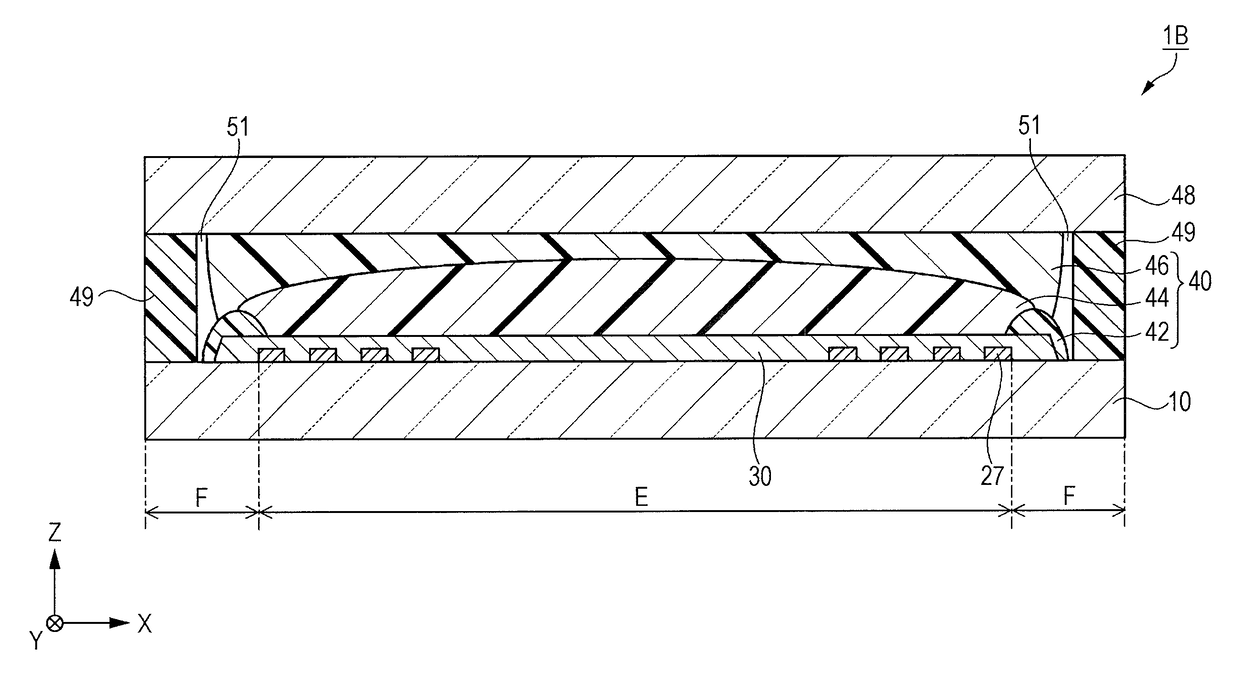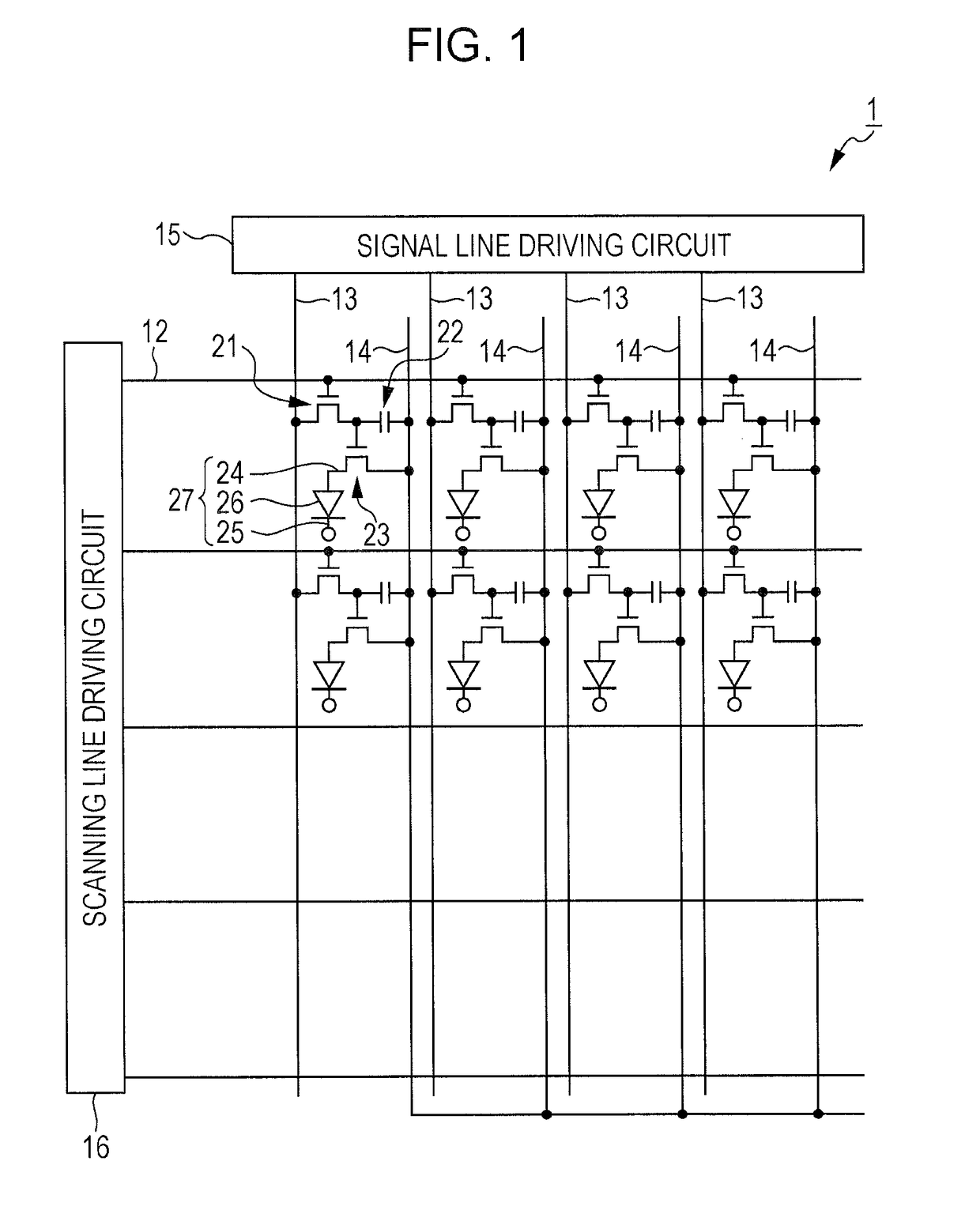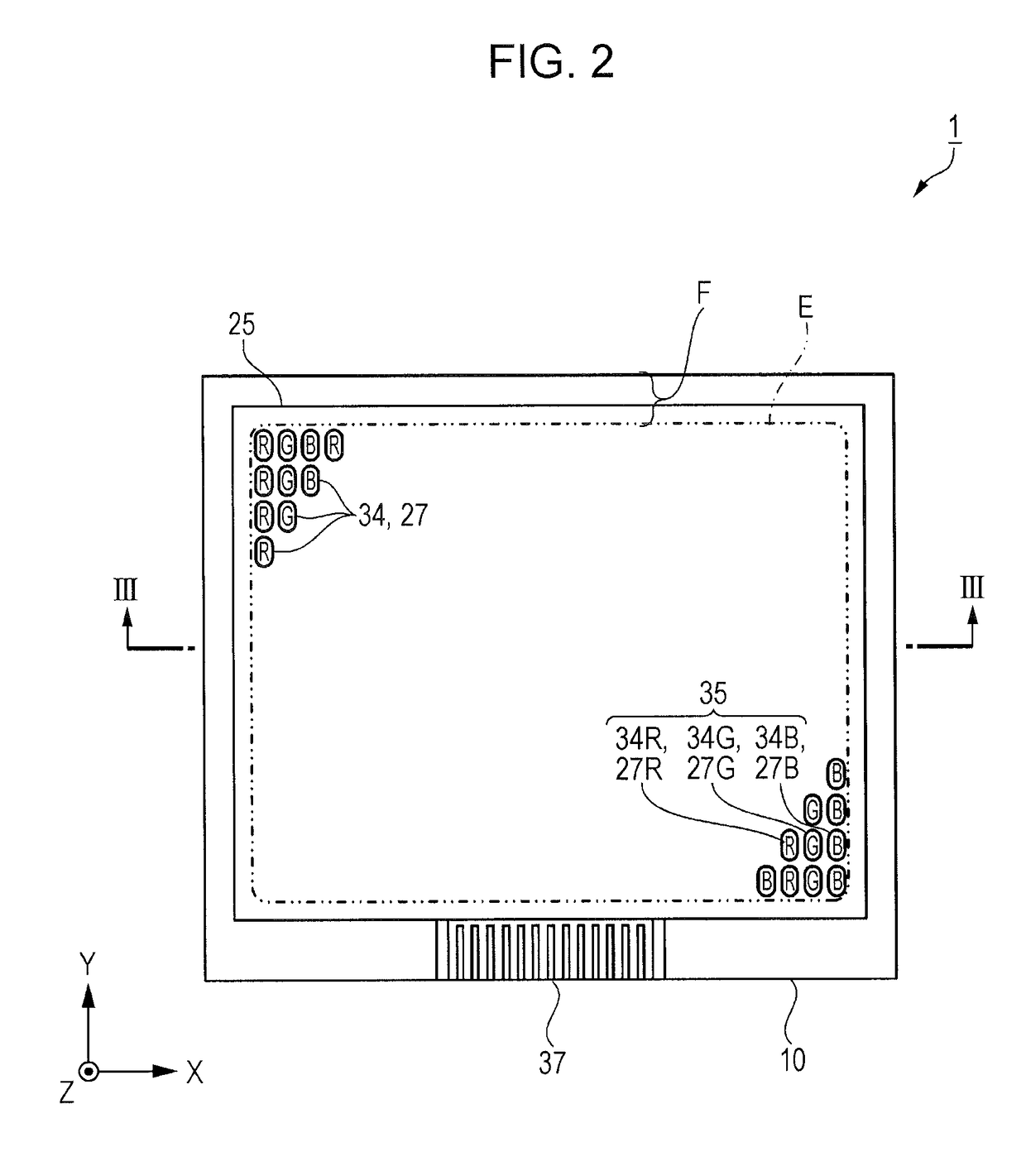Electro-optic device, method of manufacturing electro-optic device, and electronic apparatus
a manufacturing method and electrooptic technology, applied in the direction of organic semiconductor devices, solid-state devices, discharge tubes luminescnet screens, etc., can solve the problems of light emission regions, light-emitting elements, and increase in size in the entire region of the element substrate, so as to prevent curvature, distortion, or small differences between the related refractive index
- Summary
- Abstract
- Description
- Claims
- Application Information
AI Technical Summary
Benefits of technology
Problems solved by technology
Method used
Image
Examples
first embodiment
Organic EL Device
[0059]First, the configuration of an organic EL device which is an electro-optic device according to a first embodiment will be described with reference to the drawings. FIG. 1 is an equivalent circuit diagram illustrating an electric configuration of the organic EL device according to the first embodiment. FIG. 2 is a schematic plan view illustrating the configuration of the organic EL device according to the first embodiment. In FIG. 2, a counter substrate 48 (see FIG. 3) is not illustrated.
[0060]As illustrated in FIG. 1, an organic EL device 1 is an active matrix type organic EL device in which transistors are used as switching elements. The transistor is, for example, a thin film transistor (hereinafter referred to as a TFT) using a thin film semiconductor layer.
[0061]The organic EL device 1 includes an element substrate 10 (see FIG. 2) which is a first substrate, scanning lines 12 that are installed on a first surface 10a (see FIG. 3) of the element substrate 1...
second embodiment
Electro-Optic Device
[0156]Next, a light-receiving and emitting device which is an electro-optic device according to a second embodiment will be described with reference to FIG. 10. FIG. 10 is a schematic sectional view illustrating the configuration of an organic EL device according to the second embodiment. As illustrated in FIG. 10, a light-receiving and emitting device 3 according to the second embodiment is an electro-optic device configured by combining an organic EL device 1A which is an electro-optic device and a light-receiving device 2 which is an electro-optic device.
[0157]First, the organic EL device 1A will be described. The organic EL device 1A is disposed on a counter substrate 85 of the light-receiving device 2. The organic EL device 1A is different from the organic EL device 1 according to the first embodiment in that micro-lenses 47 are formed on the surface 48a of the counter substrate 48 and is the same as the organic EL device 1 in the remaining configuration. Th...
third embodiment
Electronic Apparatus
[0174]Next, an electronic apparatus according to a third embodiment will be described with reference to FIG. 11. FIG. 11 is a schematic diagram illustrating the configuration of a head-mounted display which is an electronic apparatus according to a third embodiment.
[0175]As illustrated in FIG. 11, a head-mounted display (HMD) 100 according to the third embodiment includes two display units 101 installed to correspond to left and right eyes. A viewer M can view text, images, or the like displayed on the display units 101 when the viewer M mounts the head-mounted display 100 on his or her head part like glasses. For example, when images in consideration of parallax are displayed on the left and right display units 101, the viewer M can view and enjoy a stereoscopic image.
[0176]The organic EL device 1 according to the first embodiment is mounted on each display unit 101. Accordingly, it is possible to provide the head-mounted display 100 that has excellent display q...
PUM
 Login to View More
Login to View More Abstract
Description
Claims
Application Information
 Login to View More
Login to View More - R&D
- Intellectual Property
- Life Sciences
- Materials
- Tech Scout
- Unparalleled Data Quality
- Higher Quality Content
- 60% Fewer Hallucinations
Browse by: Latest US Patents, China's latest patents, Technical Efficacy Thesaurus, Application Domain, Technology Topic, Popular Technical Reports.
© 2025 PatSnap. All rights reserved.Legal|Privacy policy|Modern Slavery Act Transparency Statement|Sitemap|About US| Contact US: help@patsnap.com



